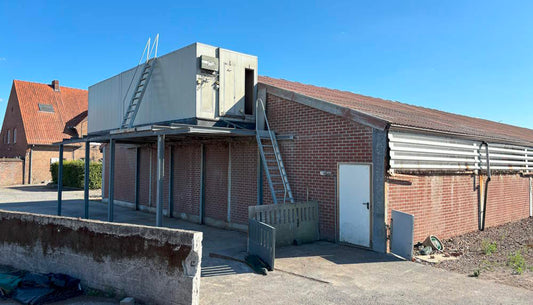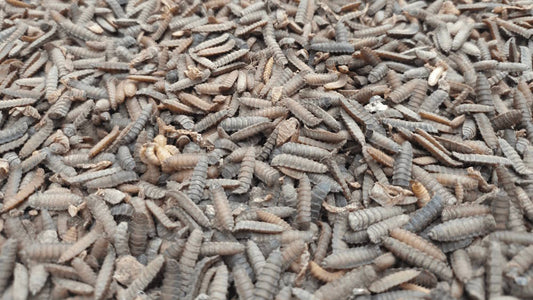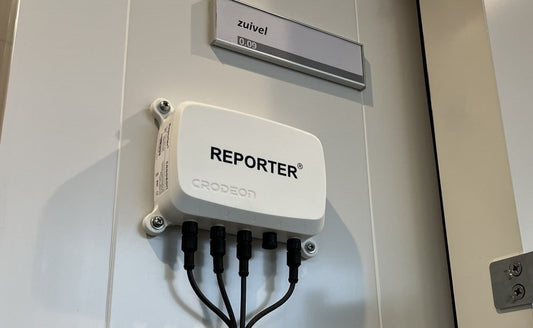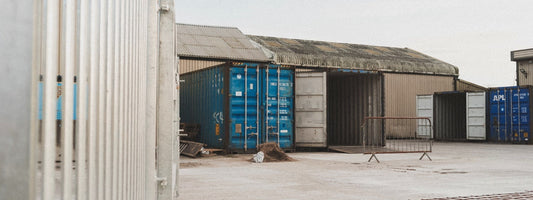Qu'est-ce que le point de rosée ?

Il existe plusieurs façons de mesurer la température et l'humidité, l'une d'elles étant le point de rosée ou la température du point de rosée. Nous allons vous aider à comprendre ce qu'est exactement le point de rosée.
Qu'est-ce que la température du point de rosée ?
La température du point de rosée est la température à laquelle l'air ne peut plus contenir d'humidité supplémentaire. Cela signifie que l'air est saturé à 100 %. Le point de rosée correspond à 100 % d'humidité relative (HR), mais l'HR et le point de rosée sont des valeurs relatives.
Selon la température et la pression, l'air peut contenir plus ou moins d'eau, et ainsi, le point de rosée (et l'HR max) monte ou descend. Pour simplifier, les exemples ci-dessous ont une pression de l'air fixe.
Voyons quelques exemples :
- Nous sommes dans une maison. Il fait 20°C, l'HR est à 65 %. La maison se refroidit sans être ventilée, donc la quantité d'eau dans l'air reste la même. Cependant, l'air froid peut contenir moins d'eau que l'air chaud. L'humidité relative change donc. Il fait maintenant 15°C et l'HR est de 89 %. À ce stade, on peut voir les fenêtres se couvrir de buée (lorsque la température extérieure est plus basse qu'à l'intérieur). Si la température baisse encore, nous atteignons 13,2°C avec une HR de 100 %, soit le point de rosée. Les meubles sont maintenant couverts de gouttelettes d'eau.
- Nous sommes dehors. Il fait 14°C, l'HR est à 42 %. Il fait soudainement plus froid, sans introduction d'humidité supplémentaire. Il fait maintenant 6°C et l'HR est de 71,8 %. La température baisse encore pendant la nuit, et lorsque nous sortons le matin, l'herbe est mouillée. Il fait 1,3°C et l'HR est à 100 %, soit le point de rosée.
L'humidité relative est déterminée par la quantité d'eau que l'air à une certaine température peut contenir. Lorsque cette valeur atteint 100 %, la température de l'air est égale à la température du point de rosée.
Dans quels cas doit-on connaître le point de rosée ?
Mesurer la température du point de rosée, voire la suivre via une surveillance à distance, peut être utile dans de nombreux cas.
Agriculture & gel
Pour les agriculteurs, il peut être intéressant de surveiller la température du point de rosée lorsque leurs arbres fruitiers, arbustes et cultures sont en floraison. En effet, la floraison peut facilement être endommagée par de basses températures. Même certaines bactéries, comme Pseudomonas syringae, peuvent provoquer le gel à des températures proches de zéro avec une humidité élevée.
Le gouvernement de l'Ontario fournit les informations suivantes :
« Lorsque l'air est humide, le point de rosée se produit à une température plus élevée que lorsque l'air est sec. Une fois que la rosée commence à se former, la température de l'air baisse plus lentement, car de la chaleur est libérée. Lorsque les températures atteignent le point de congélation, la rosée se transforme en gel.
Si l'air est sec, alors le point de rosée sera bas. Si le point de rosée est inférieur à 0°C, le gel se forme au lieu de la rosée. »
Ainsi, plus le point de rosée est bas, plus la température peut chuter rapidement, causant des dégâts aux fleurs.
Travaux de construction & temps de séchage
Les matériaux doivent sécher pour adhérer ou devenir complètement durcis. Cela signifie qu'ils doivent pouvoir libérer leur humidité dans l'air tout en restant à l'abri du risque de condensation. Si l'humidité relative est trop élevée autour de ces matériaux, ils ne peuvent pas sécher. Lorsque la température des matériaux est inférieure ou égale à la température du point de rosée de l'air, il y aura condensation. Cela peut empêcher ces matériaux de durcir correctement.
Si votre entreprise de construction utilise des matériaux sensibles à l'humidité, il est extrêmement important de mesurer et de surveiller l'humidité relative et la température du point de rosée de l'air. En installant un capteur de température et d'HR, vous pouvez mesurer et surveiller votre projet de construction en béton. Si l'humidité relative devient trop élevée ou si le point de rosée de l'air augmente trop, une notification d'alarme doit être envoyée. Cela vous donne le temps de visiter votre chantier et d'installer des ventilateurs, des déshumidificateurs, des chauffages ou d'autres solutions pour protéger votre travail.
Les matériaux qui doivent être surveillés sont :









